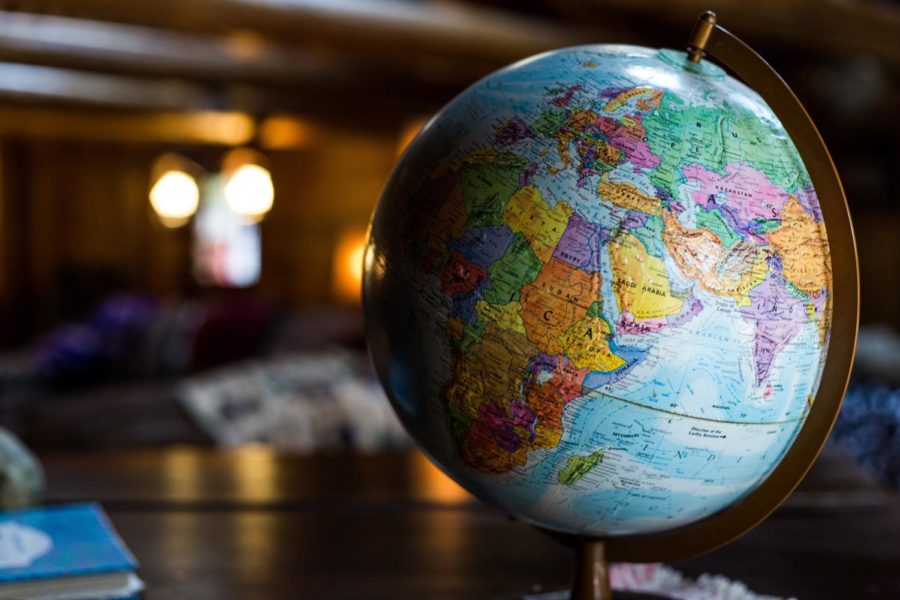The Problem of Cultural Appropriation
According to the Oxford English dictionary, ‘cultural appropriation’ is defined as “the unacknowledged or inappropriate adoption of the practices, customs, or aesthetics of one social or ethnic group by members of another (typically dominant) community or society.”
Each culture in the world is unique and should be celebrated as such. Cultural appropriation should be avoided in that it perpetuates stereotypes.
Cultural appropriation is commonly confused by some people with cultural appreciation. The proverb “Imitation is the sincerest form of flattery” is still used by many people to justify cultural appropriation. There is a line that must be acknowledged when it comes to showcasing a culture that one is not innately a part of.
While the use of the term ‘cultural appropriation’ has skyrocketed in recent years, its age may come as a surprise to some. The phrase originated in the 1980s, when it was first used in academic spaces to discuss issues such as colonialism and the relationships between majority and minority groups. However, as discussions on race and representation became more common, cultural appropriation made its way into popular culture. Broadly speaking, there are two main sides to the cultural imitation debate: those who argue that it is offensive and culturally insensitive, and those who contend that it is a show of admiration. Those taking the latter side claim that it should be termed ‘cultural appreciation’ as opposed to ‘appropriation.’
According to the Cambridge English dictionary, cultural appropriation is “an act of taking or using things from a culture that is not your own, especially without showing that you understand or respect this culture.” But even that definition is not enough for some. When celebrities and brands get called out on their actions, they are typically met with fans calling out their negligence and their need to take accountability for their actions, but there are also fans who claim that they see no wrongdoing in the actions of their preferred celebrity or brand. There is no doubt that there is a problem with those who blindly pledge their allegiance to these individuals who instead should educate themselves on the objects or actions of another culture.
Brands such as Gucci and Victoria’s Secret came under scrutiny for their lack of attention to acts resembling cultural appropriation. During the 2018 autumn/winter fashion show in Milan, Gucci revealed models sporting turbans, bindis and hats in the shape of East Asian architecture. While the models did reflect common cultural symbols that reflect Indian and South Asian cultures, the models themselves were far from those who should be representing these symbols. Specifically the turbans that were worn by non-Sikh models refer to the lack of education regarding the importance and meaning of the turban that went behind deciding to use the turbans as part of the show. Turbans are special to Sikhs who use them as a way to show their dedication and respect towards their faith.
Like Gucci, Victoria’s Secret also came under scrutiny when its models were shown appropriating Native American culture. During a Victoria’s Secret show, one of its models walked down the ramp flaunting fringed suede clothing, turquoise jewelry, and a feathered headdress. The headdress struck many as a surprise due to its importance in both spiritual and ceremonies for Native Americans. Along with the fact that headdresses are a central part of Native American culture, the headdresses are only to be worn by certain members of a tribe who have the right to wear feathers. The feathers are a reward for honor-worthy achievements and acts of bravery. Unfortunately, Victoria’s Secret decided it was appropriate to let a model with no relation to Native Americans wear it and advertise it for Victoria’s Secret’s millions of followers.
Just last year, the television reboot ‘And Just Like That’ featured an episode that seemed like it was attempting to pay a nod to Indian culture. The episode was smooth sailing for the better half of the hour, but there are moments where Indian ornaments and attire are displayed and dialogue is being recited with continuous references to elements of Indian culture. However, to the surprise of many, the television industry failed its audience by displaying different aspects of cultures than the dialogue that used to describe it. “This scene was embarrassing to watch because a quick google search could have told the producers that a lehenga and a saree are two very different articles of clothing,” said Sirajum Munira ’24, Vice President of the Hindi Cinema Club. The lack of responsibilities towards acknowledging the culture that television shows are attempting to showcase is evidence that more work needs to be done.
A long list could be formulated by just naming celebrities, television shows and movies that have participated in cultural appropriation. However, why is the reason that individuals participate in cultural appropriation even relevant? The list for that is long too, but a few reasons why cultural appropriation is harmful and toxic can be easily identified. In many cases cultural appropriation trivializes violent, historical oppression. Along with that, cultural appropriation also spreads falsehoods about marginalized cultures. But, most important of all, cultural appropriation perpetuates stereotypes.
“This scene was embarrassing to watch because a quick google search could have told the producers that a lehenga and a saree are two very different articles of clothing,” said Sirajum Munira ’24, Vice President of the Hindi Cinema Club.
Niha Roy is a Managing/Advisory Editor and a Staff Reporter for ‘The Science Survey.' She enjoys writing articles about issues and groups of people whom...
Fairuz Omar Raya is a Features Editor and Instagram Editor for ‘The Science Survey.' She believes that journalism is a privilege that allows voices to...











